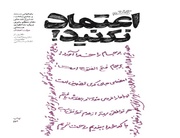For the art critic as well as historian, Queen Elizabeth I provides with a quintessentially English monarch; she was unique in bestowing the Isles with an opportunity to disentangle itself from internal obsession with religion and unleashed British colonial ambitions and potentials to roam the distant seas in search of wealth and spread imperial will the monarch at home had championed through religious tolerance which had been new to the English layman as well as the aristocracy. Daughter of a not so celebrated King Henry the VIII, Elizabeth was the sole daughter surviving from an age of bloody battles of succession the English crown was engaged. The end of the storm came when Elizabeth assumed power in November 17 1558. The accession of a female heir was however unpalatable for the European powers of the time, especially Spain, the other colonial power, which staged an Armada to conquest British Isles in 1588; but as the story goes on, only the whimsical nature of the seas defeated Armada to the rejoice of the British who now had been enjoying under the Queen the political stability as well as economic booming.
The story of succession in Britain had been the story of struggle for the Protestantism of the British Isles and the Catholicism of the continent and the old enemy, France. Seen from the rocky landscape of Calais, the Continentals saw British always a hotbed of the Protestant heresy; but as Normandy always hosted pretenders to the British throne, the British saw the continent the den of conspiracy and evil intervention which contrived vulpine plans to overtake the throne and thus to make Britain a Catholic state client of the Papacy the subject of much hatred by Henry VIII.
During the time of Reformation whose waves reached British coasts, Henry was subject of much eulogy by the Rome as the Defender of the Faith. During his time, translations of the Bible (mainly to vernaculars in the Continent and to English in Britain) came to inform the laymen their relation with the God and the sheer necessity that he should understand the Book in vernacular languages of their country. The sole of Reformation was to disentangle the hegemony the Latinate culture of the church had over the public and the domination which had lasted for centuries and gave the privilege of interpreting the Bible solely for Latin literate class of the clergy. In conformation to the Roman Church, Henry ordered execution of his Chancellor Sir Thomas More. Earlier in his carrier, More, a staunch Catholic, championed suppression of the Protestantism as heresy. He managed to secure a ban on Lutheran teachings in terms of translations of the Bible to vernaculars. Thus, William Tindale was executed in Henry’s directive, since he had translated the New Testament to English. Henry’s break with the Rome has roots in his efforts to produce a male heir to the throne. As his first marriage had only bore daughters to him, Henry sought to remarry. Pope in Rome believed kings should only marry once and thus Henry should not marry another mortal. Enraged by this ban, Henry was bold enough to set Anglican Church free from the strait-jacket of the Rome. He stated that the king from now on the head of the state and the church. Thus he managed to legitimize his many marriages which proved unfruitful to produce a male heir so dearly sought by the monarch; instead he produced Elizabeth, far more efficient than a male would-be king.

Elizabeth ruled for 45 years and had no heir. She had many suiters, one noteworthy was Spain’s Philip I whose proposal Elizabeth delayed in answering for political matters. As a second cause, marriage of a Protestant queen to a Catholic king would incite anger and dissatisfaction to the public in Britain.
With the death of old Elizabeth in 1603, the succession problem was on the horizon. Elizabeth produced no heir to the throne; she was married to the Britain and served it well. The English went for their northern neighbor Scotland to bring James VI to become James I of England and Scotland, thus temporarily uniting the two neighbors; the actual union however came only in 1707 by Act of Union of England and Scotland approved in the House.
The idea of primogeniture has been a guiding principle when addressing who should be the next to be the monarch; the first and eldest son of the sovereign usually assumed the throne after the death of the sovereign. If only a daughter lives without any son, she will be the monarch; the first-son rule leaves however many potential pretenders to the throne by other sons and grand-sons of the monarch, whose odds of success and a chance to glory would make them potential challengers of the major heir. No other female monarch than Elizabeth the First had ever been to Canterbury Cathedral to put the throne before King Henry VIII.
The institution of monarchy had been less politically powerful and more of a ceremonial since the trepidations of the revolutionary Britain of the 17th century where republicans ruled in an interregnum without the king. They tried and executed Charles I in 1649 when the Royalists were defeated by Parliamentary armies of the England and Scotland. However, the conservatives restored the monarchy to the Isles after the death of so towering a figure as Oliver Cromwell who was a republican leader and the arch-fiend in the eyes of the royalist English public who fought his army in the Civil War.
With the Royalist star on descending, the Royalists went to Scotland again for a king. Charles of Scotland was deposed in 1651. His farther Charles I defeated and executed, Charles II escaped to France in exile, and with the death of Cromwell, he was restored to monarchy to resume the Stuart line of succession in 1660. His brother James, known as James II, was Catholic by faith and when in 1685 he faced demands that he should convert to Protestantism to secure the Jacobite succession, he balked. The succession of a Catholic monarch had been dreaded by the British and they had waged every effort to secure a Protestant king to have the crown. Such was the situation. So, in 1688 an army of the public and tradesman went to the Netherland to bring a grandson of Charles I and the son-in-law of James II, Duke of York, William of Orange, known as William III of Britain, during an event known as the Glorious Revolution, since no blood was shed for succession. People saw James II, Catholic by faith, a danger to the unity and their religion, but hailed William and Mary, who in 1689 crowned as the new monarch, so ending a potential war of succession peacefully.
The succession of William III however saw resistance by the advocates of a direct Jacobite line, and whose efforts produced nothing, since James II remained Catholic. Since then, the dreaded event had been a Jacobite king overtaking British throne. For nearly a half century, France had been the home to the Old Pretender, James Francis Edward, Prince of Wales. His first and last attempt from Scotland to reclaim the Hanoverian court was aborted when he saw his fans disorganized. He then returned to France.
After the reign of Queen Anne, who was popular by the public and proved she was English by nature, all monarch came from House of Hanover, from the continent. Queen Anne spoke to the Parliament: “As I know my heart to be entirely English, I can very sincerely assure you there is not anything you can expect or desire from me which I shall not be ready to do for the happiness and prosperity of England,” reminiscent of the Elizabeth I in her devotion to the nation. George Elector of Hanover succeeded her as the monarch.
The Jacobite-Hanoverian struggle however had repercussions for the British politics as well. In the much of the 18th century, Jacobite ministers almost was out of power in politics; Oxford and Bolingborke was two Tory ministers who during the Whig supremacy marginalized for the much of the century, with Whig minister ruling the country virtually in person. He was Robert Walpole, the first lord of the treasury under George I until 1842. Walpole installed cronies and family members to lucrative government positions and placated the Parliament with corrupting them, just to have in the monarchy the line of Hanover. Tories will not recover a significant role in British politics until the party regroups in 1784 under the young William Pitt. The corrupt system of Walpole was swept away only in 1832 when Reform Act brought significant changes to the political system.
Three Georges ruled Britain. Only George III ruled absolutely, defying his many ministers and was unpopular in 19th century, when the American Revolution defeated the British on other side of the Atlantic to declare independence as 13 colonies now united against George III seen by them as tyrant and usurper, with whom Romanticist poet Percy Bysshe Shelley shared the view.

British royal house produced no female heir until Queen Victoria, then the Empress of India, whose rule was culmination of the British imperialism abroad and nationalism at home. Her time was the century of great innovations in art and science and Charles Darwin dominated the century with his revolutionary ideas and the biology triumphed the Victorian Britain. The ideological quakes by Darwin’s theory of Evolution of Species teased the hypocritical man of the Renaissance out of his cocoon, tailored by the humanism of the Continent. By Darwin’s time, man understood that he was only a creature much like other creatures in the vast expanse of time the evolution had been developing its way down to modern man. The Church, either Protestant or Catholic, lost much of its authority by the British middle-class, whose renewed sense of being alone in the universe had been deteriorated by the earnestness and the morality prevailing in high Victorian era. Darwin was much of a shock for the world and the British as well in opening new interpretations of the Bible and casting doubt on the patriarchic and despotic authority the Book had extended over the much of the Christianity during past centuries.
A succession of male monarchs ruled between the death of Victoria in 1901 and Elizabeth II. Elizabeth is great-granddaughter of Edward VII, who inherited the crown from his mother, Queen Victoria. She became queen in 1952 and is currently the longest female head of state and the regnant in the history of the monarchy. In the line of succession the old queen (now 90) is her eldest son by Prince Philip her husband, Prince Charles, Duke of York, the hereditary title given to the heir-apparent. The first-son rule again prioritizes the succession to the son of Charles, Duke of Cambridge, Prince William. Married to Catherine Middleton, he has already produced two other potential heirs to the throne still having chances of monarchy, thus outrunning their uncle Prince Harry, brother to Prince William: Prince George (born 22 July 2013) and his sister Charlotte Elizabeth Diana (born 4 May 2015).

By the modernization, secularization, and globalization and with the religion now losing much of its aura among the middle-class Britain, the story of succession now would be a simple formality than any serious matter with far-reaching impact on the life of the population.
Queen Elizabeth II has been ill this Christmas and could not have delivered speech for the New Year’s Eve in January 2017. Her son Charles, now 69 (born 1948) is the first in line to the throne. With two other potential male heirs, Britain will wait possibly for the decades until a female head of state to come.
Historically, female rule has been envied and disparaged by the inherently androcentric historiography territory. However, achievements of female monarchs outshine those of male kings whose infamous rules rendered the British now a small island in northern Europe; once sun never set in British colonies; with Elizabeth II called in after the World War II the Queen of the Britain and Northern Ireland, the colonial power retreated; India got independence. Now, Canada and Australia bear only nominally the rule of Queen under parliamentary democracies. But the British legacy still exists. The empire, as it is better known among the historians, has been of tremendous suffering for the colonies around the world, a mentality which cast doubt on the colonial ambitions of the Britain during late Victorian and early Edwardian periods.

























Your Comment